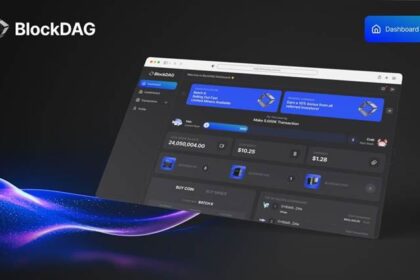It is no wonder that certain industries are facing issues with adopting layer-1 blockchain technology. This is because of the challenges associated with this technology. It takes careful planning, technological knowledge, and teamwork to develop this technology and deal with all the challenges related to its implementation. Fortunately, thanks to the Qubetics Network, a future where industries can utilise layer-1 blockchain technology no longer seems far off.
The network understands the challenges faced by layer-1 blockchains and resolves them with innovative features. Let’s find out how Qubetics tackles the issues hindering the progress of layer-1 blockchains!
Layer-1 Blockchains: The Foundation of Blockchain Technology
Layer-1 blockchains are where cryptocurrencies like Bitcoin and Ethereum reside and where smart contracts are built and executed. They are known for their transparency as they operate independently and don’t require intermediaries. With layer-1 blockchains, peer-to-peer transactions can be carried out in a fair environment. They are also highly secure and virtually immune to third-party attacks.
Limitations of Layer-1 Blockchains
Some of the issues related to layer-1 blockchains that prevent the technology’s mass-scale adoption are:
Scalability Issues: It is common for layer-1 blockchain networks to become congested during peak hours, slowing the speed of transactions and increasing gas fees.
Lack of Interoperability: Layer-1 blockchains often operate in isolation, which makes it difficult for them to share data with each other.
Qubetics, A Game Changing Layer-1 Blockchain
Qubetics, a layer-1 blockchain, relies on its unique and innovative features to provide a better experience to its users. Both individuals and industries can benefit from this new layer-1 blockchain project. Here are some of the features of Qubetics that improve layer-1 blockchain technology:
Improved Scalability
Qubetics is fully compatible with the Ethereum Virtual Machine (EVM), which allows it to use Ethereum’s scaling solutions. Utilising layer-2 solutions and sharding techniques, Qubetics ensures its users can enjoy smooth and swift transactions even during peak hours.
High transaction throughput and reduced latency create a scalable blockchain that can benefit both users and industries. Enterprises can save money by letting Qubetics handle assets and data transfers.
Interoperability
Qubetics Web3 Infrastructure makes it an interconnected system that unifies multiple networks. Its improved interoperability will unlock the full potential of decentralised technologies for everyone, from enterprises to individual users. Developers can also benefit from decentralised technologies and build blockchain applications with ease.
Security
Qubetics has multiple safety features in place to protect the identities and assets of its users. The network has improved its security by adopting Byzantine Fault Tolerant (BFT) and State Machine Replication (SMR). Qubetics also utilises a quantum-resistant address scheme using post-quantum cryptography to ensure the identity of its users and their data remain protected from quantum computing threats.

Conclusion
Challenges of layer-1 blockchains may have made it impossible for industries to adopt the technology, but things are about to change due to the Qubetics Network. Users and industries can look forward to a better future for blockchain technology. You can also be a part of this game-changing project by pre-registering for the Qubetics presale!
Don’t Miss Your Chance, Presale Launching Soon
Qubetics: https://www.qubetics.com/
Telegram: https://t.me/qubetics
Twitter: https://twitter.com/qubetics








